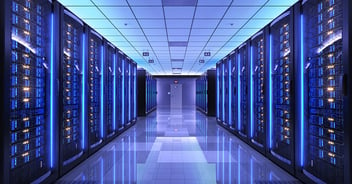Businesses are using edge computing to reduce the amount of data traffic running in and out of networks in order to ease congestion, allow for real-time analysis and interpretation of data, and improve security. Government agencies, from local to federal offices, may find that edge computing solves many of the challenges of modernizing network infrastructure.
What is edge computing? Edge computing involves any data processing that’s completed right at or near the place where the data is collected. This method of processing allows the data to be handled locally, rather than traveling over the network to a central processing or data center.
Taking edge computing to the government: Government agencies often have a lot of their budget tied up in the maintenance and support of legacy systems. This doesn’t mean that edge computing is out of reach; rather, it can go a long way in helping modernize agencies through implementation with a broader IT vision. Edge computing becomes a bridge between existing legacy systems and cloud solutions.
With the growth of Internet of Things (IoT) devices, businesses and governments are being inundated with data. Edge computing allows that data to stay closer to its point of ingestion and remove the burden on network pathways while reducing costs related to cloud storage. Cost savings are, in general, the main motivation for agencies applying edge computing concepts to their networks.
Another major benefit of edge computing is the reduced vulnerability of data. By handling all of the processing at the source, there’s no need to send streams of data over the network. In addition, agencies can remove critical data, such as names and addresses, before storing data in the cloud.
Practical applications: Government agencies in all forms are recognizing the potential advantages of applying edge computing. Local governments are using the technology to aid in smart cities initiatives, with real-time data informing autonomous cars about traffic, road conditions and safety hazards in order to move efficiently around a metropolitan area. The White House’s Smart City Initiative includes 25 cities that are working to deploy these technologies, and many of them rely on data processed close to the source.
The military is accessing edge computing to process large amounts of data from drones, as they use 3D surveying and mapping tools to better inform search-and-rescue training. Real-time data is critical in a variety of military scenarios and will keep the military safer in their work.
When it’s time to implement a change to your network infrastructure, choose not just a provider but a true partner with superior customer service. With certified onsite technician support, you’ll never suffer a lapse in connectivity, and you’ll make just a single phone call when any issue arises. Contact us at Tailwind for more information.


